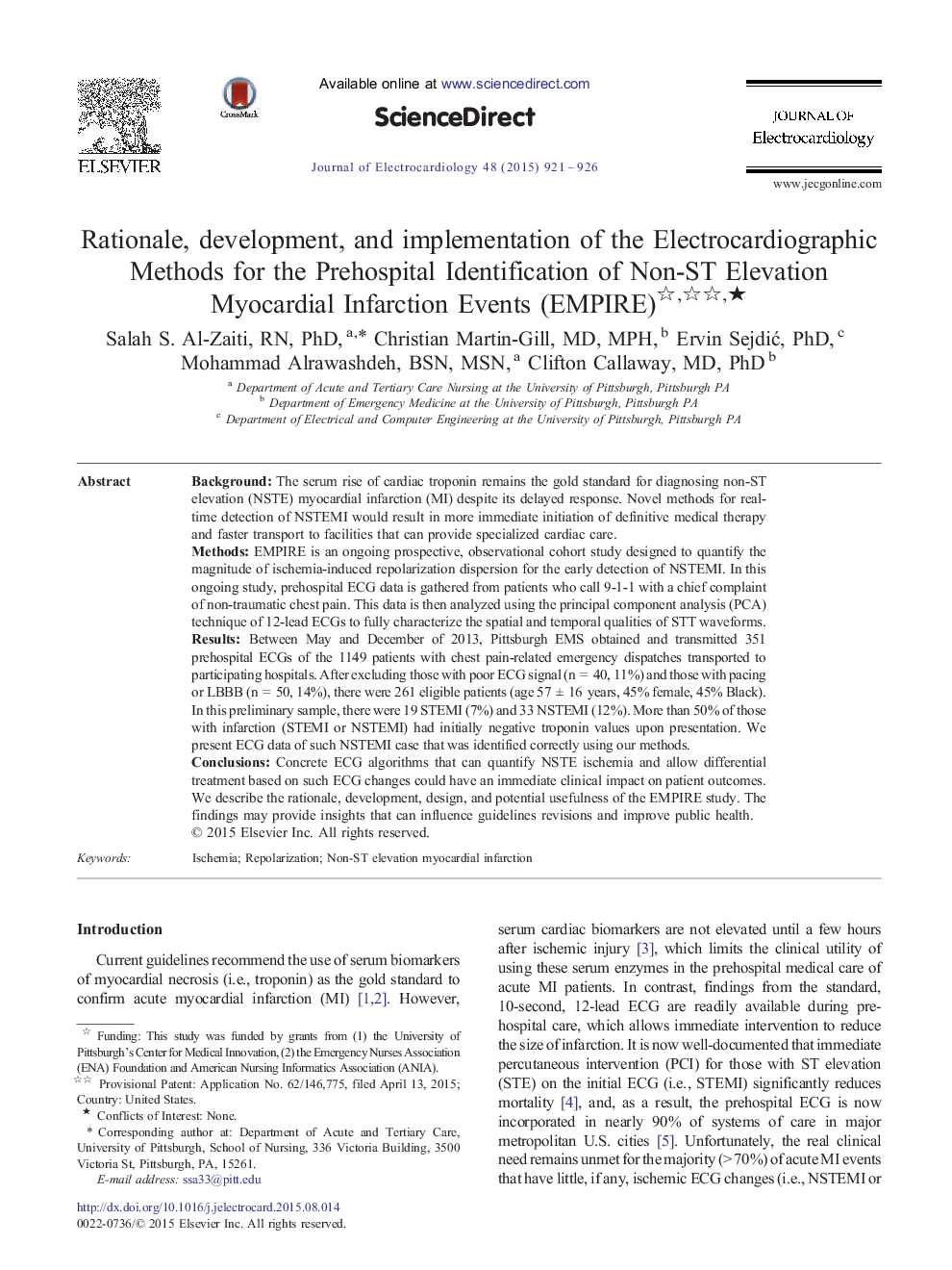| کد مقاله | کد نشریه | سال انتشار | مقاله انگلیسی | نسخه تمام متن |
|---|---|---|---|---|
| 2967364 | 1178840 | 2015 | 6 صفحه PDF | دانلود رایگان |

BackgroundThe serum rise of cardiac troponin remains the gold standard for diagnosing non-ST elevation (NSTE) myocardial infarction (MI) despite its delayed response. Novel methods for real-time detection of NSTEMI would result in more immediate initiation of definitive medical therapy and faster transport to facilities that can provide specialized cardiac care.MethodsEMPIRE is an ongoing prospective, observational cohort study designed to quantify the magnitude of ischemia-induced repolarization dispersion for the early detection of NSTEMI. In this ongoing study, prehospital ECG data is gathered from patients who call 9-1-1 with a chief complaint of non-traumatic chest pain. This data is then analyzed using the principal component analysis (PCA) technique of 12-lead ECGs to fully characterize the spatial and temporal qualities of STT waveforms.ResultsBetween May and December of 2013, Pittsburgh EMS obtained and transmitted 351 prehospital ECGs of the 1149 patients with chest pain-related emergency dispatches transported to participating hospitals. After excluding those with poor ECG signal (n = 40, 11%) and those with pacing or LBBB (n = 50, 14%), there were 261 eligible patients (age 57 ± 16 years, 45% female, 45% Black). In this preliminary sample, there were 19 STEMI (7%) and 33 NSTEMI (12%). More than 50% of those with infarction (STEMI or NSTEMI) had initially negative troponin values upon presentation. We present ECG data of such NSTEMI case that was identified correctly using our methods.ConclusionsConcrete ECG algorithms that can quantify NSTE ischemia and allow differential treatment based on such ECG changes could have an immediate clinical impact on patient outcomes. We describe the rationale, development, design, and potential usefulness of the EMPIRE study. The findings may provide insights that can influence guidelines revisions and improve public health.
Journal: Journal of Electrocardiology - Volume 48, Issue 6, November–December 2015, Pages 921–926